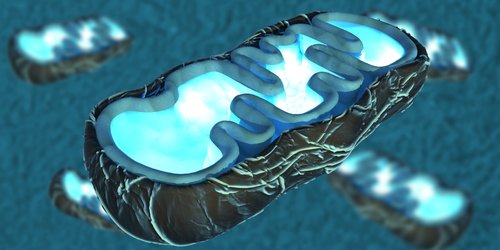Abnormal Protein Interaction Impairs Mitochondrial Function, May Lead to Neurodegenerative Disorders, Study Suggests

The normal interaction between two key members of the same mitochondrial protein family is essential to maintain proper energy production and prevent oxidative damage associated with neurodegenerative diseases, Wayne State University researchers have found.
The study titled “The cellular stress proteins CHCHD10 and MNRR1 (CHCHD2): Partners in mitochondrial and nuclear function and dysfunction,” was published in the Journal of Biological Chemistry.
CHCHD10 belongs to the twin Cx9C protein family in the mitochondria, the cellular power plant. These proteins have a role in disease and research specifically showed that CHCHD10 regulates mitochondrial structure, energy production, stability of mitochondrial DNA, and cell death.
MNRR1, also called CHCHD2, is another member of the same protein family, which is also present in the cell nucleus. Insufficient levels of oxygen, known as hypoxic stress, increase the production of MNRR1. In turn, deletion of the MNRR1 gene induces a state that resembles mitochondrial disease, with reduced oxygen consumption and cellular growth, as well as increased production of reactive oxygen species (ROS), which causes oxidative stress.
Mutated CHCHD10 has been found in patients with diverse neurodegenerative disorders, such as amyotrophic lateral sclerosis and frontotemporal dementia. However, the normal role of CHCHD10 remains largely unknown.
Through a series of in vitro and molecular biology experiments, the researchers found that, similar to MNRR1, the CHCHD10 gene responds to oxygen deficiency.
In the mitochondria, results showed that CHCHD10 interacts with COX, a critical enzyme in the last step of mitochondrial energy production. The interaction between the protein and COX increases oxygen consumption. Scientists also observed that CHCHD10 contributes to the function of MNRR1 and its binding to COX.
However, in the cell nucleus, the investigators found that the effects of CHCHD10 are the opposite of MNRR1, as it suppresses the expression of genes needed for the response to low oxygen levels. These genes contain a small DNA sequence termed oxygen responsive element (ORE).
The investigators then manipulated the CHCHD10 gene to introduce two mutations associated with disease. Results showed that both mutants failed to supress expression of genes containing ORE and demonstrated impaired regulation of oxygen consumption and production of mitochondrial ROS. These alterations in mitochondrial function resulted from its reduced interaction with MNRR1.
“Our findings provide new mechanistic insights into the role of CHCHD10 under physiological conditions and a potential mechanism for the pathogenic effects seen in several mutant versions,” the researchers wrote.
They also observed that alterations in the CHCHD10-MNRR1 interaction may contribute to the neurodegenerative disorders with which CHCHD10 mutations have been linked.






